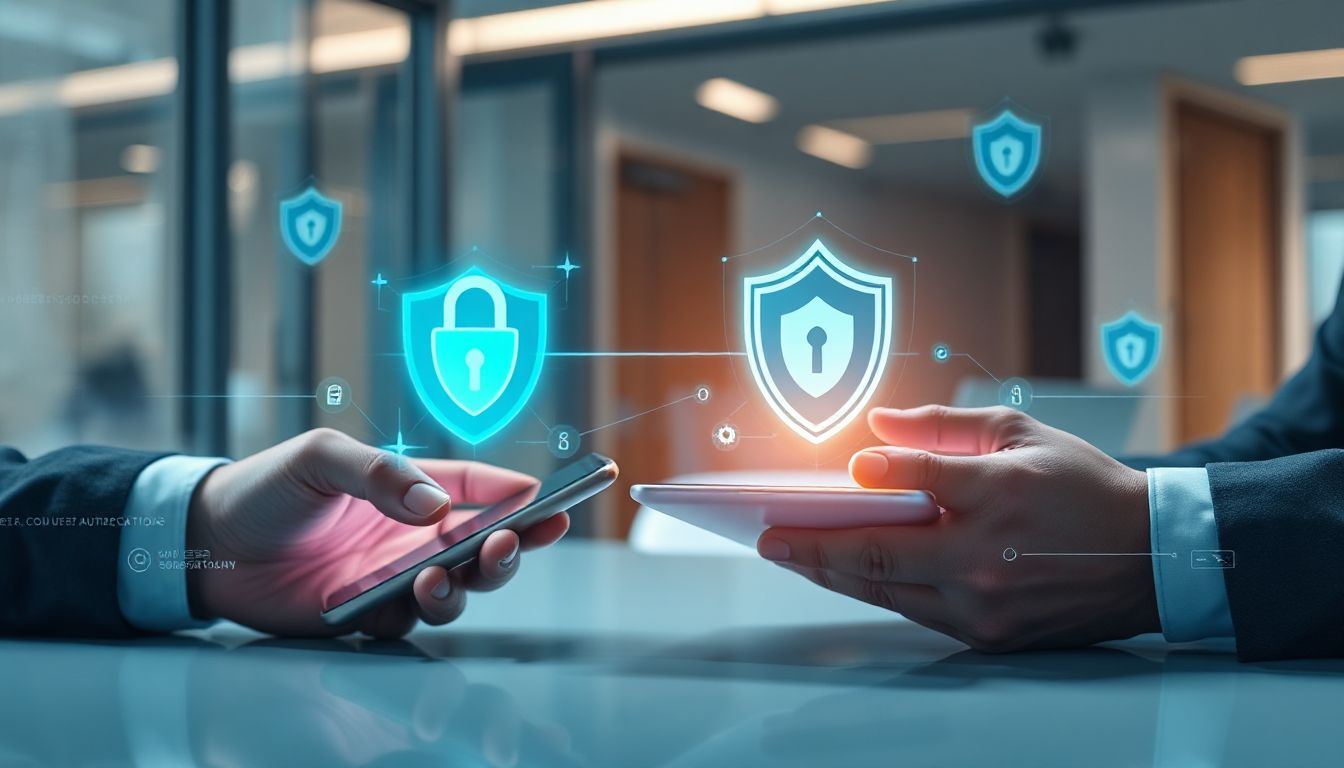Introduction
Switching devices is part of modern life. Whether upgrading to the latest smartphone, repairing a broken tablet, or swapping out a work laptop, device transfers happen all the time. But this process isn’t always secure. If you’re not careful, hackers can take advantage of these moments to access your personal data or steal your identity. That’s where two-factor authentication (2FA) becomes a crucial shield. Using 2FA during device transfers helps protect sensitive information from prying eyes and potential misuse.
Understanding Two-Factor Authentication and Its Importance
What is Two-Factor Authentication?
An additional step in confirming your identity is two-factor authentication, or 2FA. By providing a second piece of proof, you go beyond simply typing a password. Usually, this is something you have, like a code sent to your phone, or something you are, like a fingerprint. Because hackers require more information than just your password, hacking becomes considerably more difficult.
Different from single-factor authentication, where your password is enough, 2FA adds a second barrier. This layered approach dramatically boosts security, especially during device moves when your accounts are more exposed.
Why 2FA is Essential for Device Security
Cybercriminals are always finding new ways to crack into accounts. During a transfer, your accounts can be more vulnerable. People have seen cases where hackers hijacked accounts simply because a user forgot to turn on 2FA. When 2FA is active, it’s like locking your door even if someone gets your key. It stops unauthorized users from gaining access quickly. Many organizations see a significant drop in breaches when they enable 2FA on all their accounts.
Common 2FA Methods
- SMS Codes: You get a one-time code sent via text message. It’s easy but can be vulnerable if someone hijacks your phone number.
- Authenticator Apps: Apps like Google Authenticator or Authy generate random codes. These are more secure than SMS.
- Hardware Tokens: Small physical devices that produce codes when pressed. They are very secure but more costly.
- Biometric Verification: Using fingerprint or face recognition. Convenient and hard to fake, making it ideal for device use.
Each method has its trade-offs, but the best practice involves using authenticator apps or hardware tokens. They are tougher for hackers to compromise.
Risks Associated with Transferring Devices Without 2FA
Increased Vulnerability to Account Takeovers
Without extra security, hackers can sometimes take over accounts during device transfers. Think about someone stealing your old device or intercepting your data transfer. They could access emails, bank accounts, or social media. For example, in 2022, a common scam involved hacking an unprotected phone during a switch and draining banking apps within minutes.
Loss of Sensitive Data
Transferring devices often involves copying files, photos, or work documents. If done without proper security, that data is exposed. Leaks of private information may result in corporate espionage or identity theft. Imagine an organization’s confidential plans slipping into the wrong hands just because they didn’t use 2FA on their accounts.
Man-in-the-Middle Attacks and Phishing
Cybercriminals may attempt to intercept data transfers or deceive you into disclosing security information. Phishing emails pretending to be trusted companies are common. Hackers could also exploit unsecured connections to steal login info. Without 2FA, these tricks are much easier to pull off.
Best Practices for Securing Device Transfers with 2FA
Enable 2FA Before Initiating Device Transfer
Set up 2FA on all your accounts beforehand. Turn it on before you start moving data. Double-check that it works correctly — no last-minute surprises. Enabling 2FA early ensures your accounts stay protected during the transfer process.
Use Secure Authentication Methods
Choose authentication options that are less vulnerable. Authenticator apps or hardware tokens are better than relying on SMS codes. Store backup codes securely, and keep your devices safe with screen locks and encrypted storage.
Notify Service Providers of Device Changes
Update your account info with service providers as soon as possible. Notify them about the new device to avoid suspicious activity alerts. This proactive step can help you avoid account lockouts or security flags.
Remove 2FA from Old Devices Safely
Once the transfer is complete, disable 2FA on your previous device if it’s no longer secure. Make sure you don’t leave gaps in your security. Use the new device to verify your accounts are fully transitioned and protected.
Expert Insights and Industry Recommendations
Cybersecurity pros agree that 2FA is vital during device transfers. One expert from a top security firm said, “Enabling 2FA is one of the simplest ways to prevent unauthorized access during device swaps.” Organizations like NIST recommend using authentication apps or hardware tokens over SMS for better security. Many companies are now making 2FA a required step for device management, reflecting its importance.
Actionable Tips to Enhance Security During Device Transfer
- Regularly update your account recovery options and backup codes.
- Keep your authentication apps and hardware tokens in a safe place.
- Conduct security checks after the transfer to confirm everything is secure.
- Stay informed about new threats and security updates from trusted sources.
Conclusion
Transferring devices doesn’t have to be a security nightmare. Implementing two-factor authentication during these times shields your accounts from cybercriminals trying to exploit weak points. Taking a few extra minutes to set up 2FA saves you from potential data breaches and identity theft. Make 2FA a staple step in your device management routine, and enjoy peace of mind knowing your data is protected every time you upgrade or switch devices.
Key Takeaways
- Two-factor authentication significantly boosts safety during device transfers.
- Hackers are prevented from readily accessing your accounts by multiple stages of authentication.
- To keep safe, check and update your security settings on a regular basis.
Protect your data—enable 2FA when transferring devices and keep cybercriminals out of your digital life.
